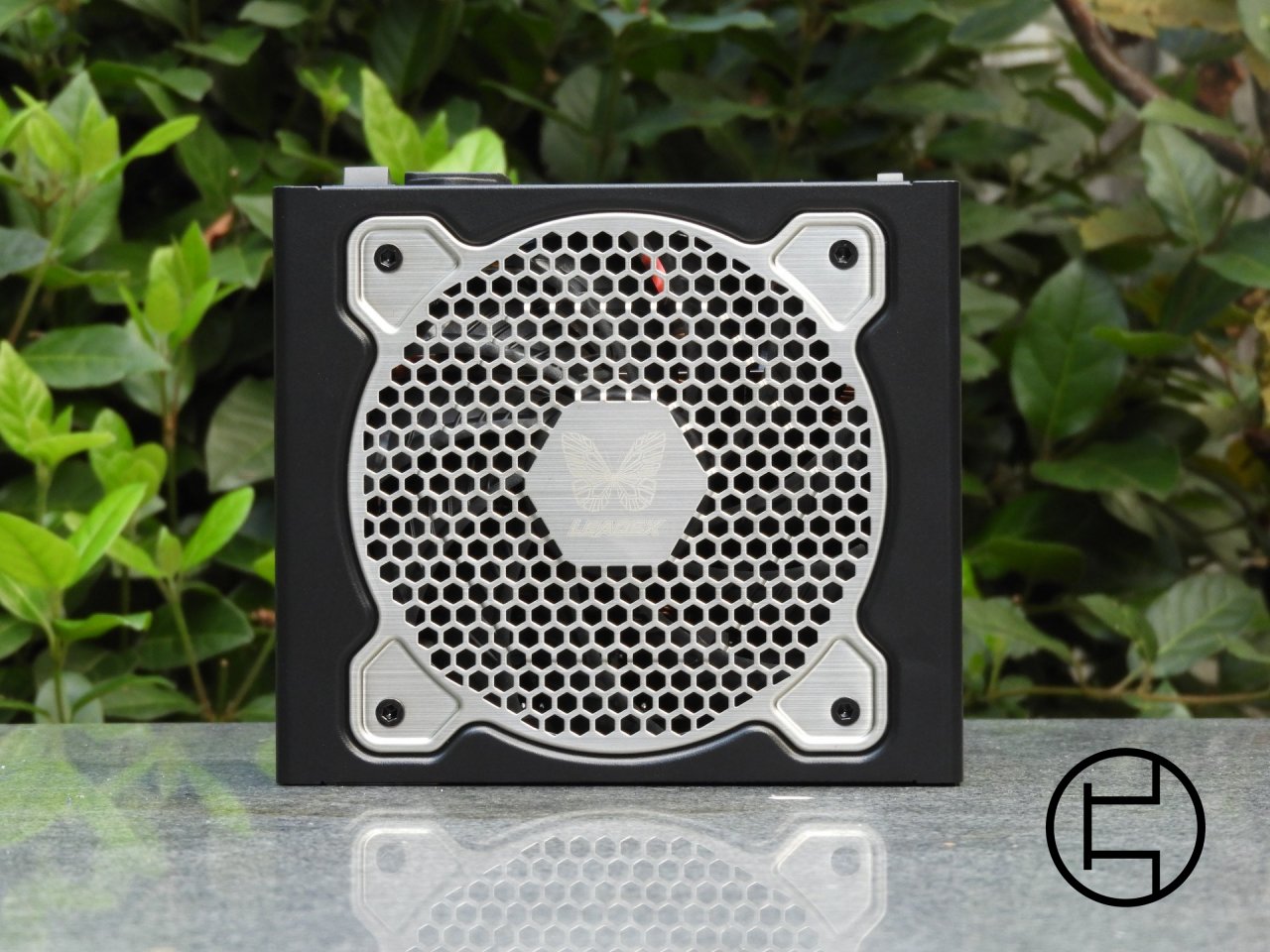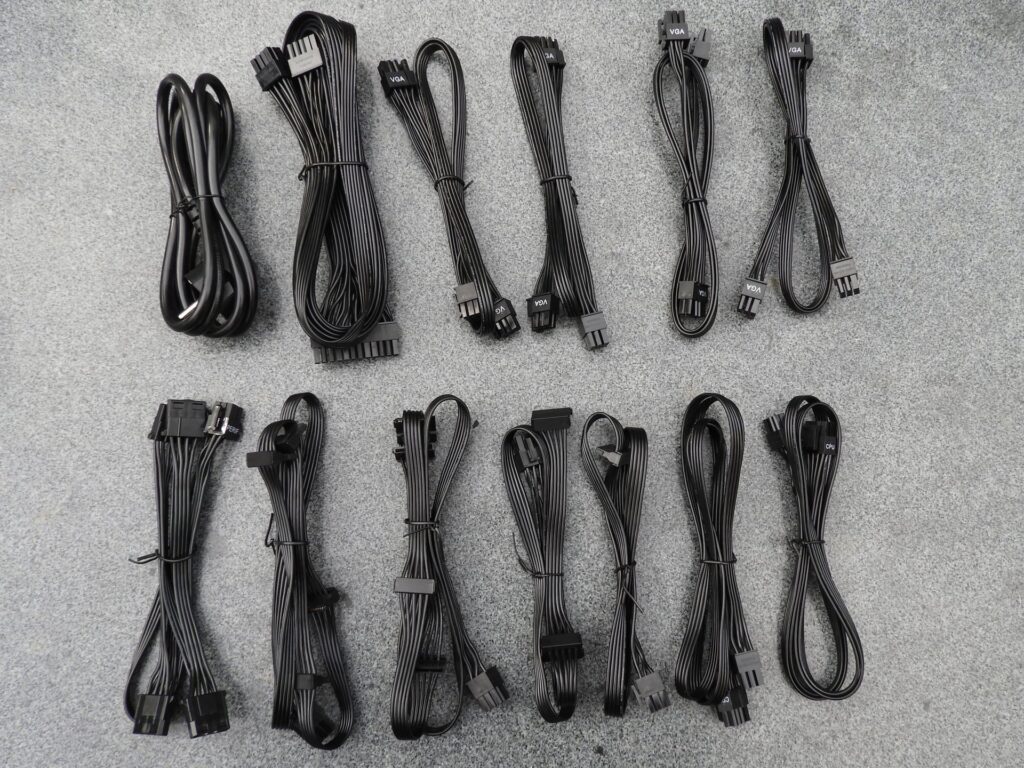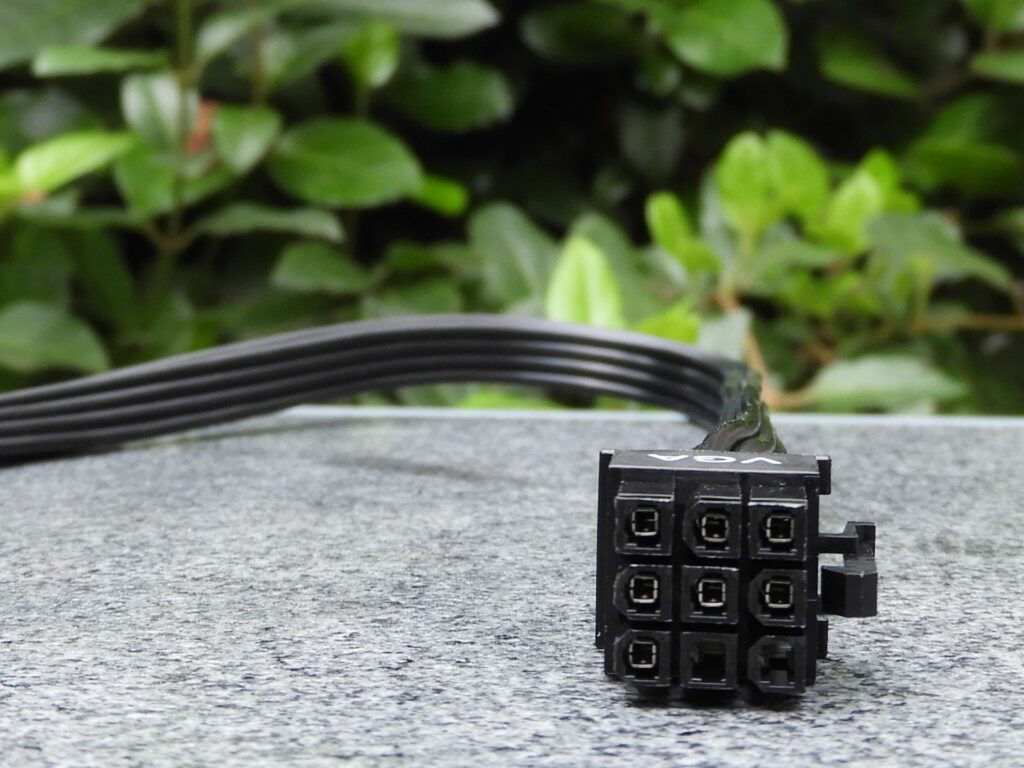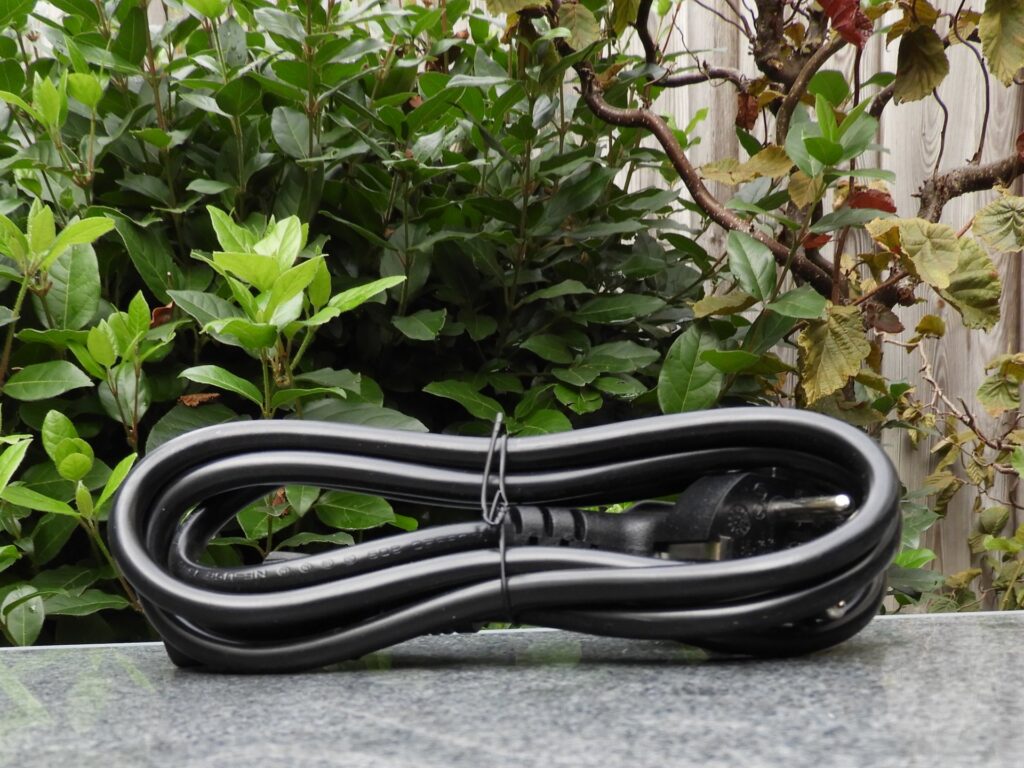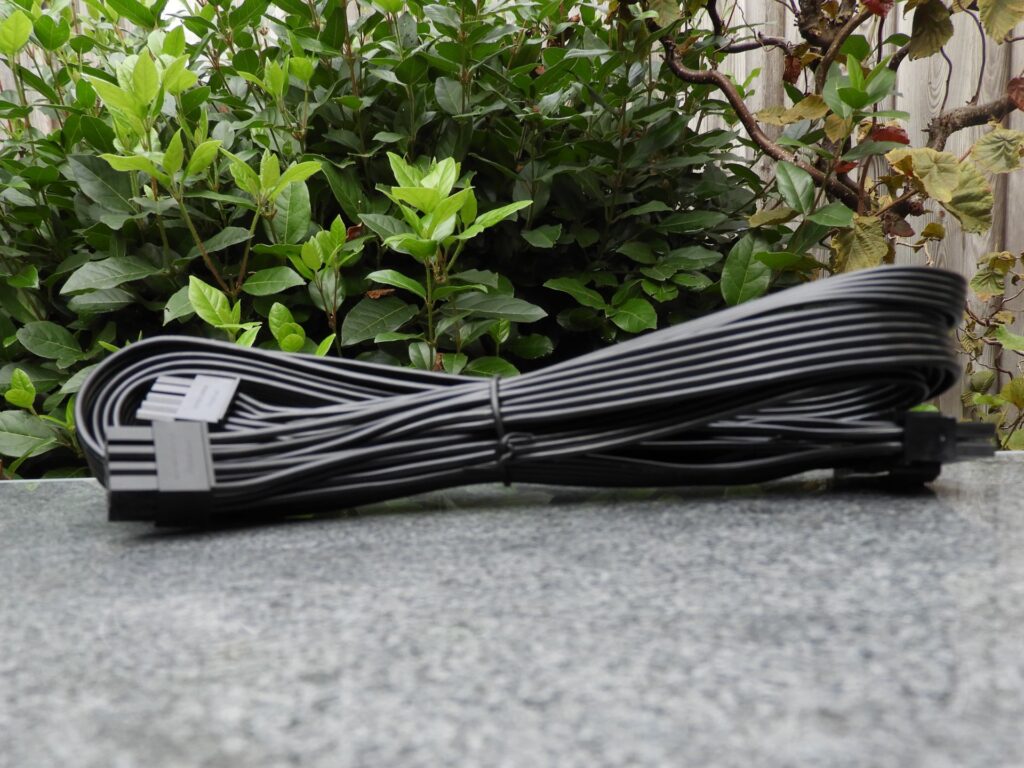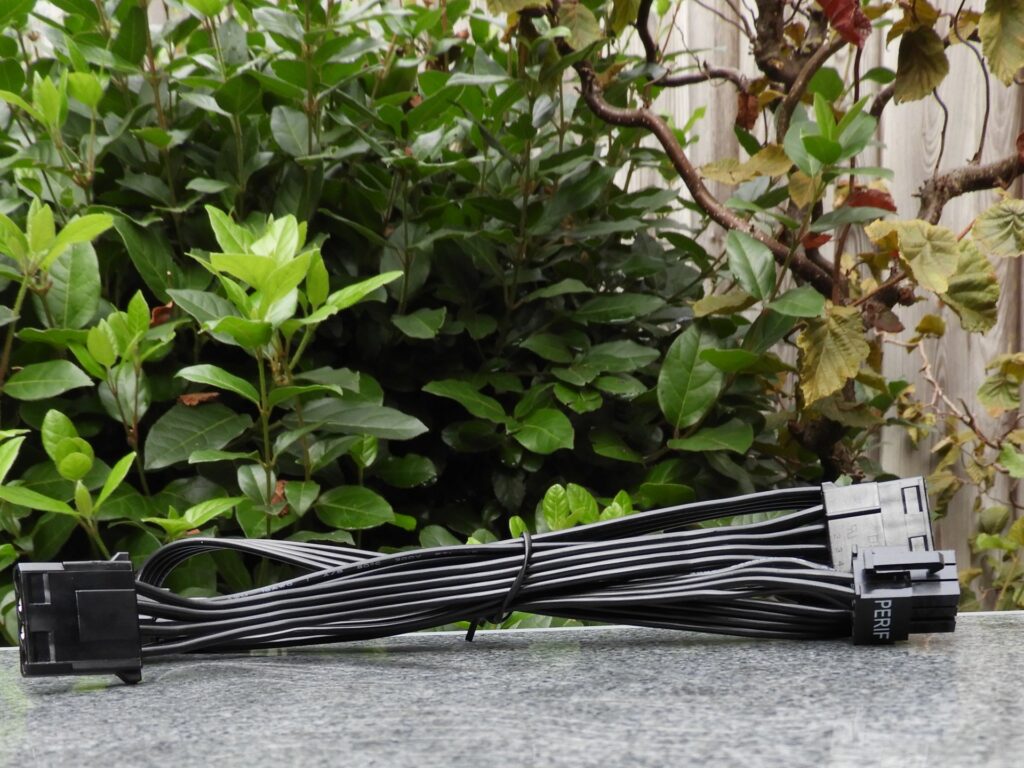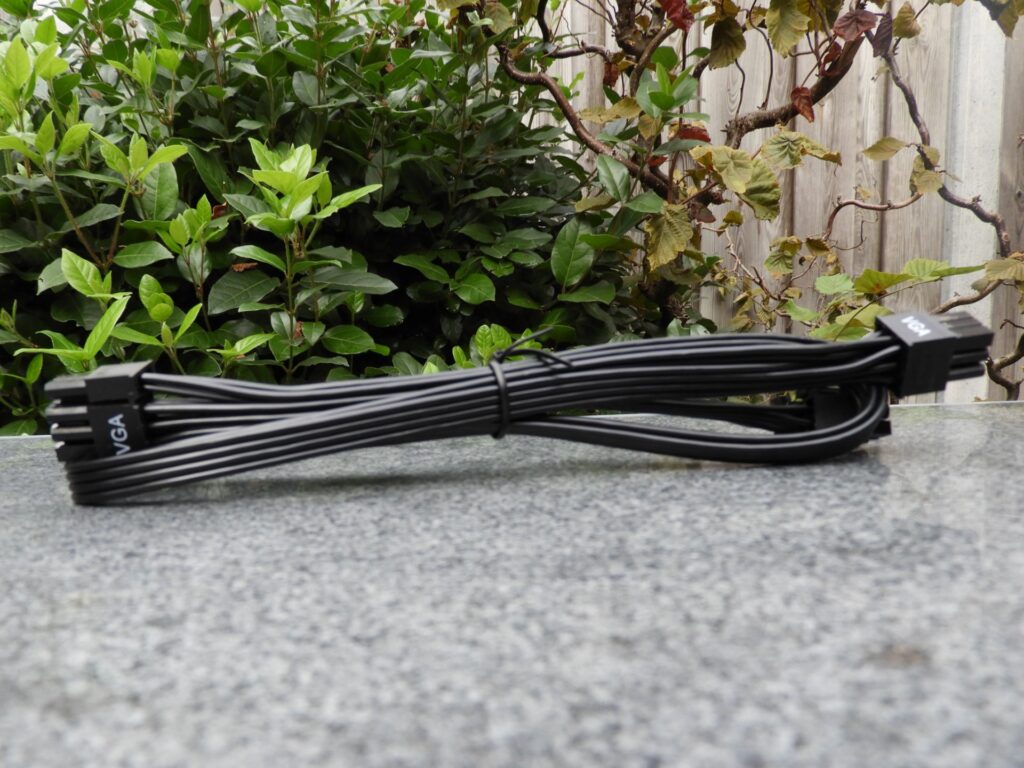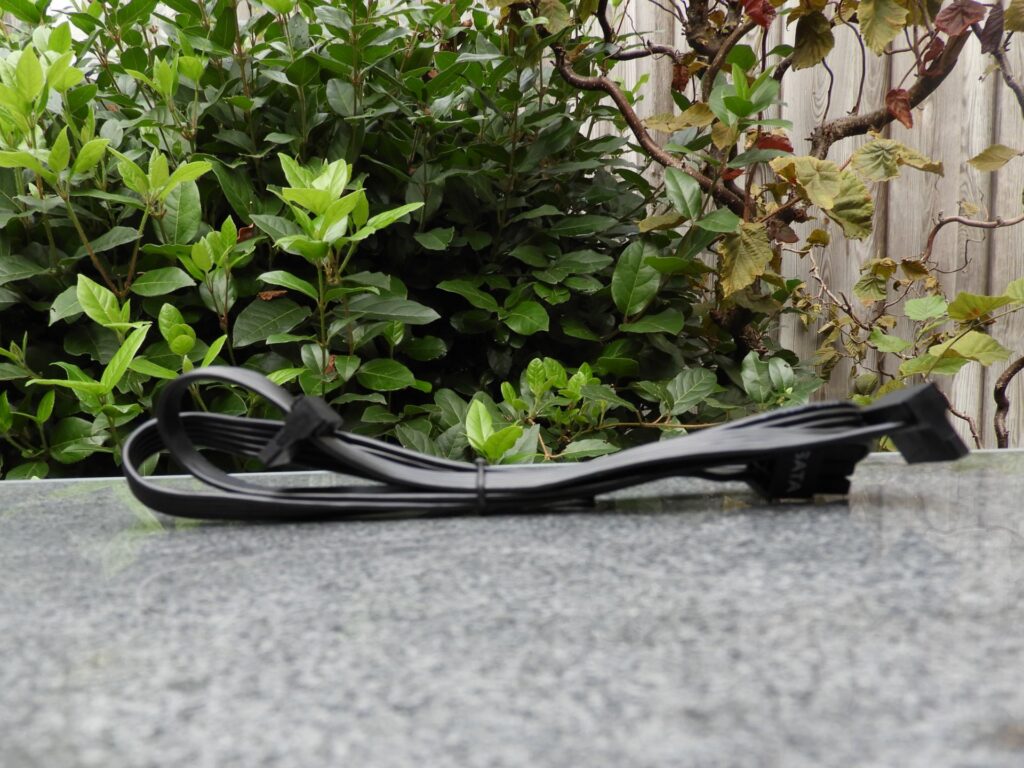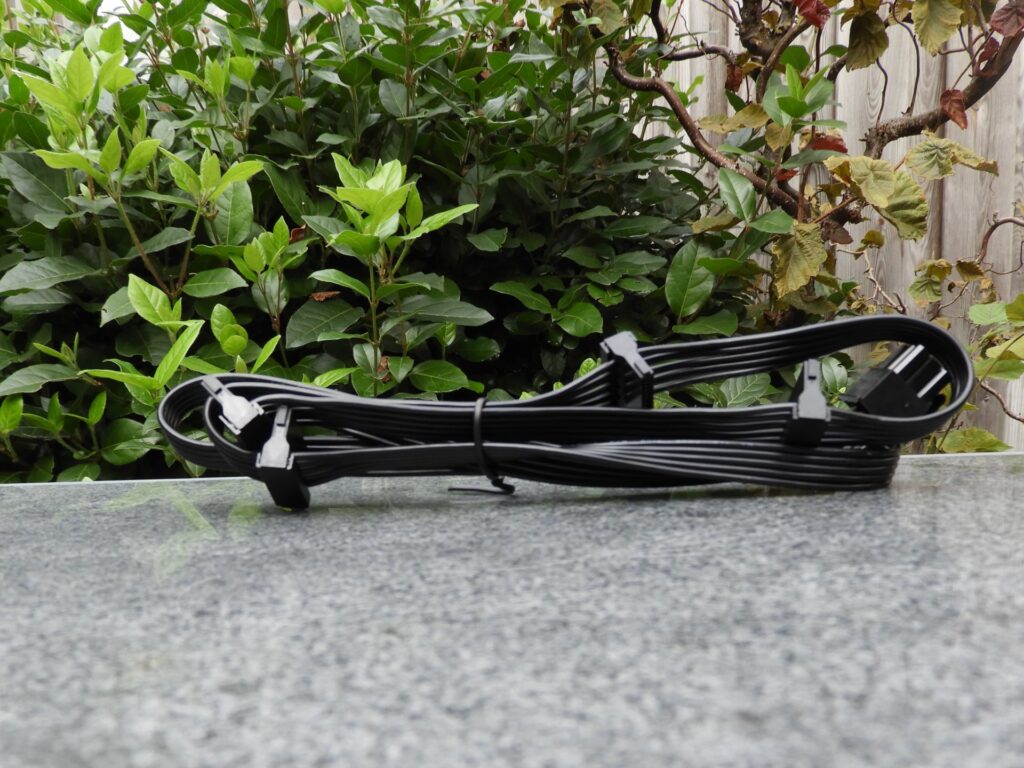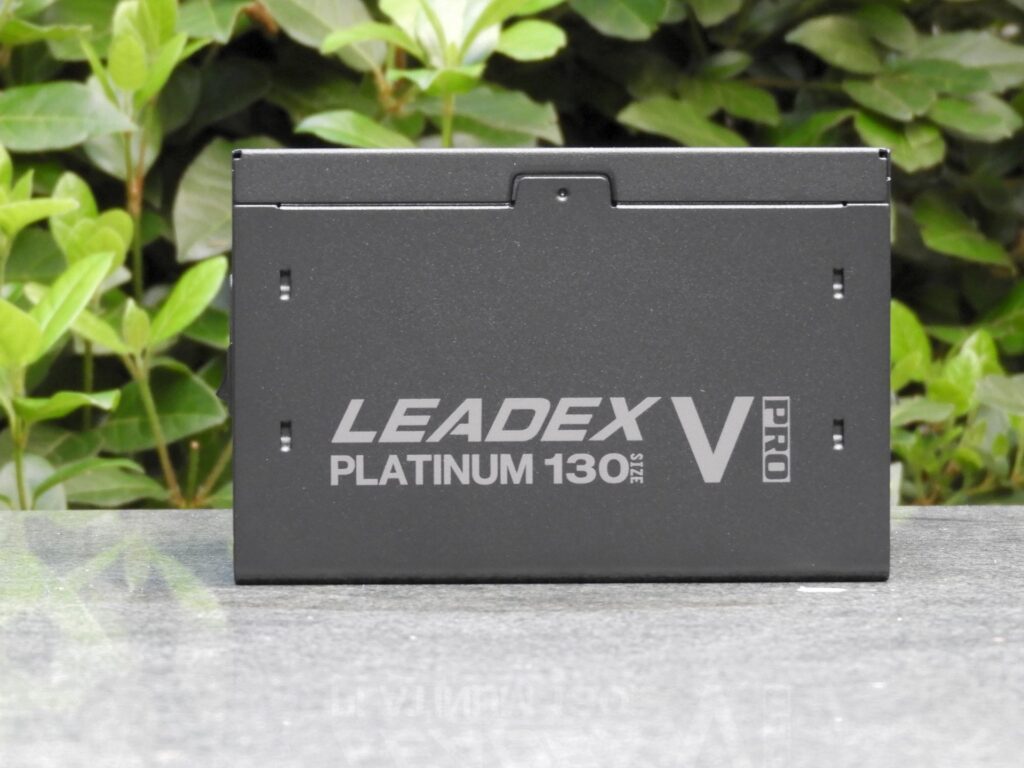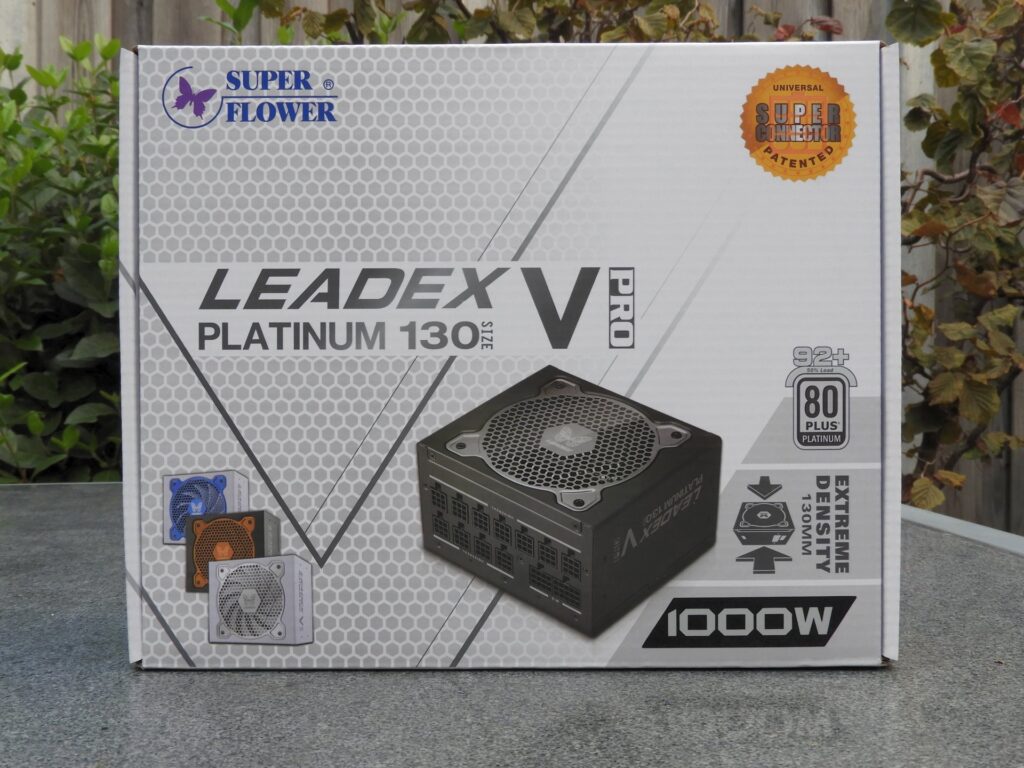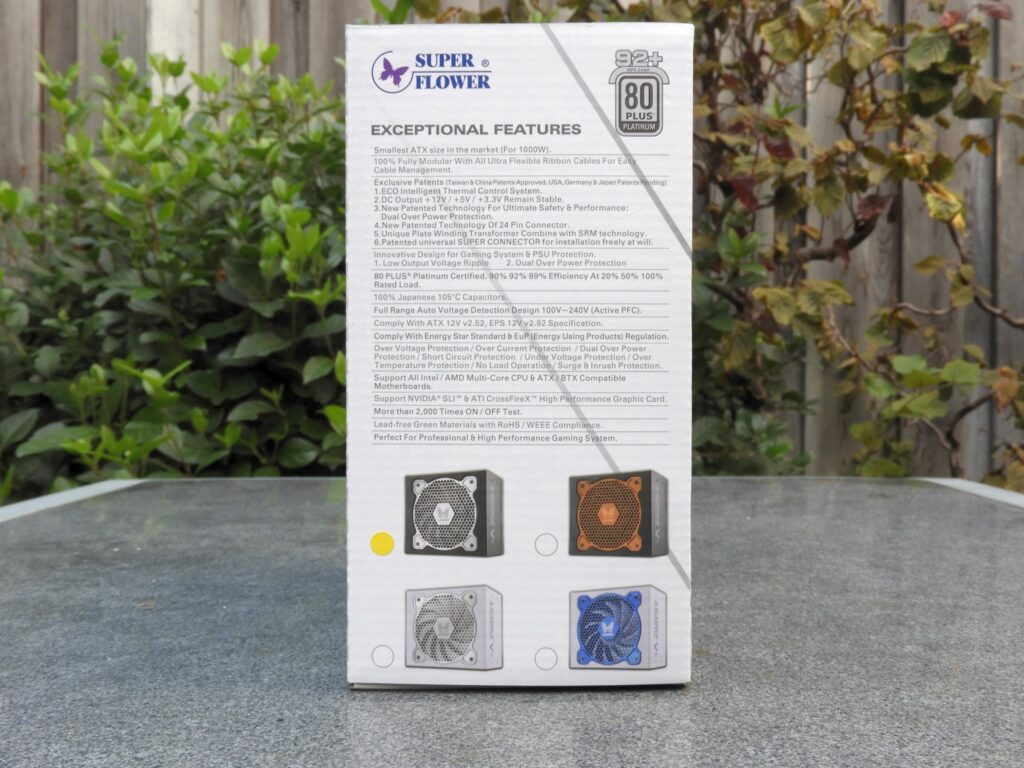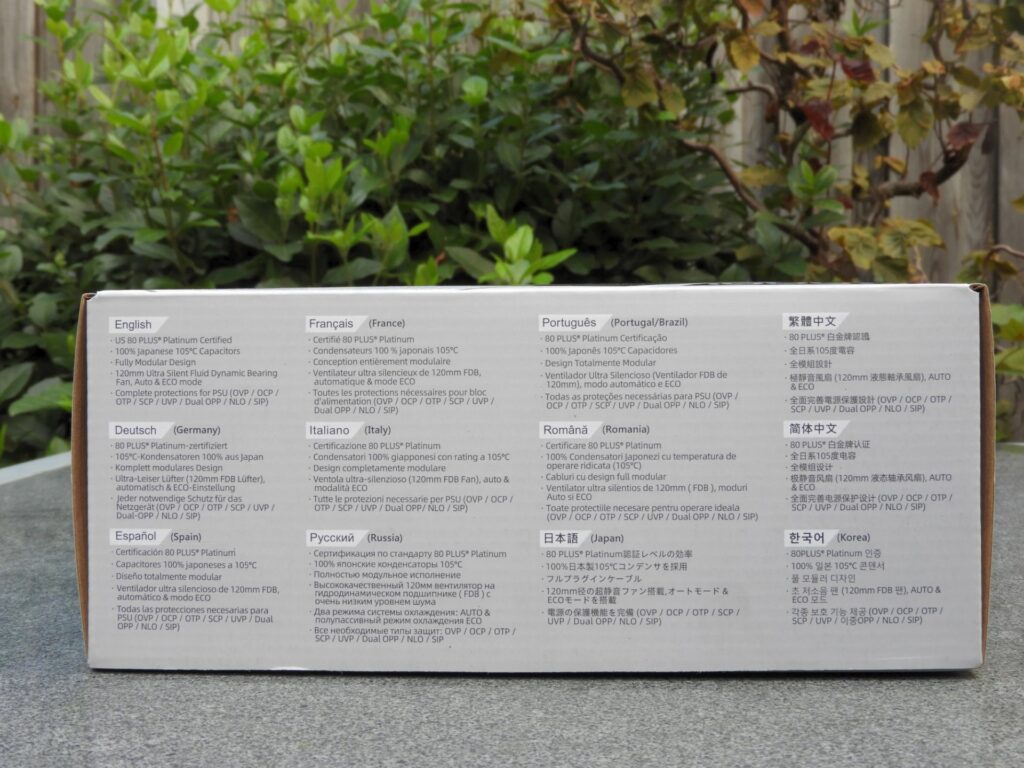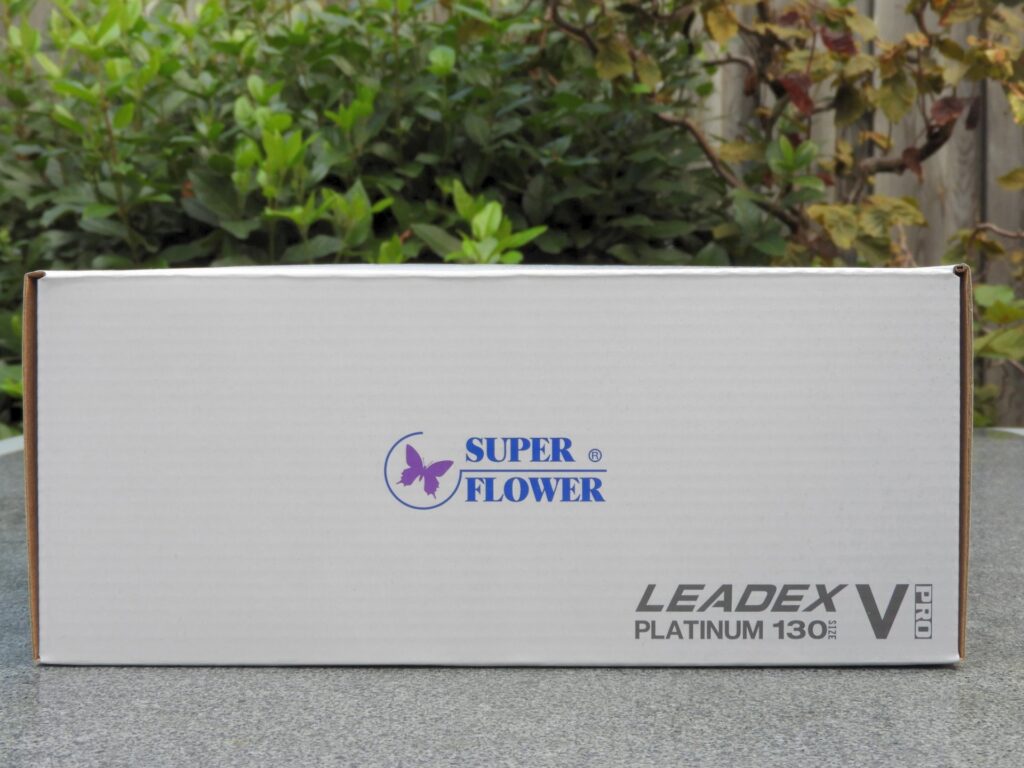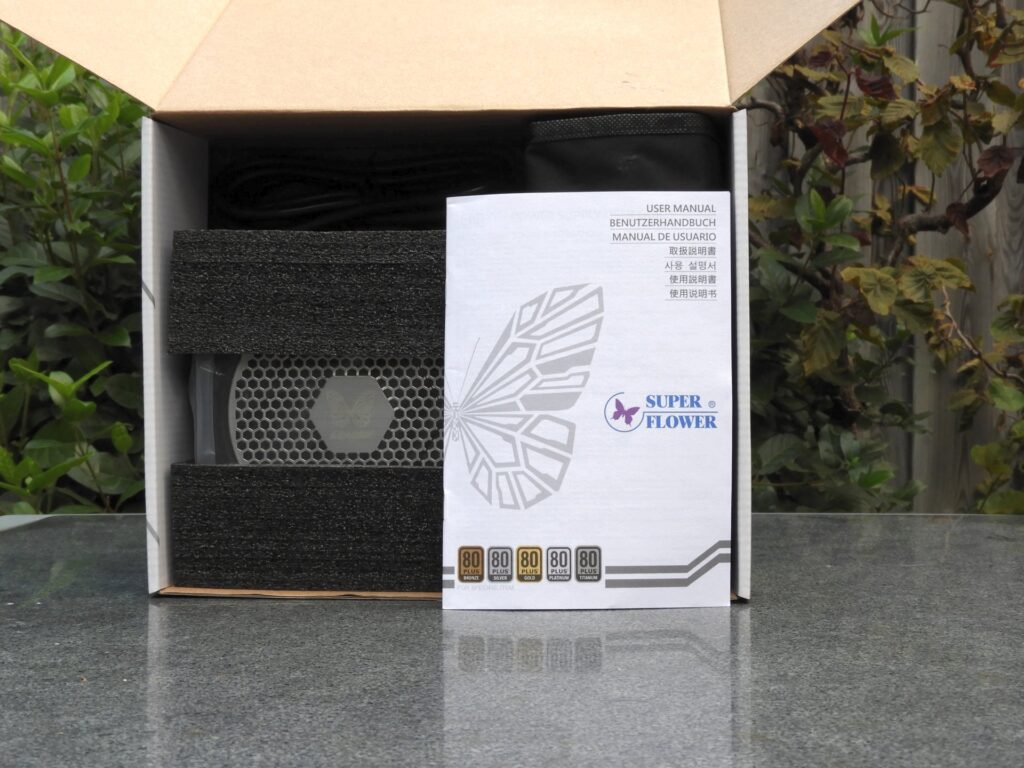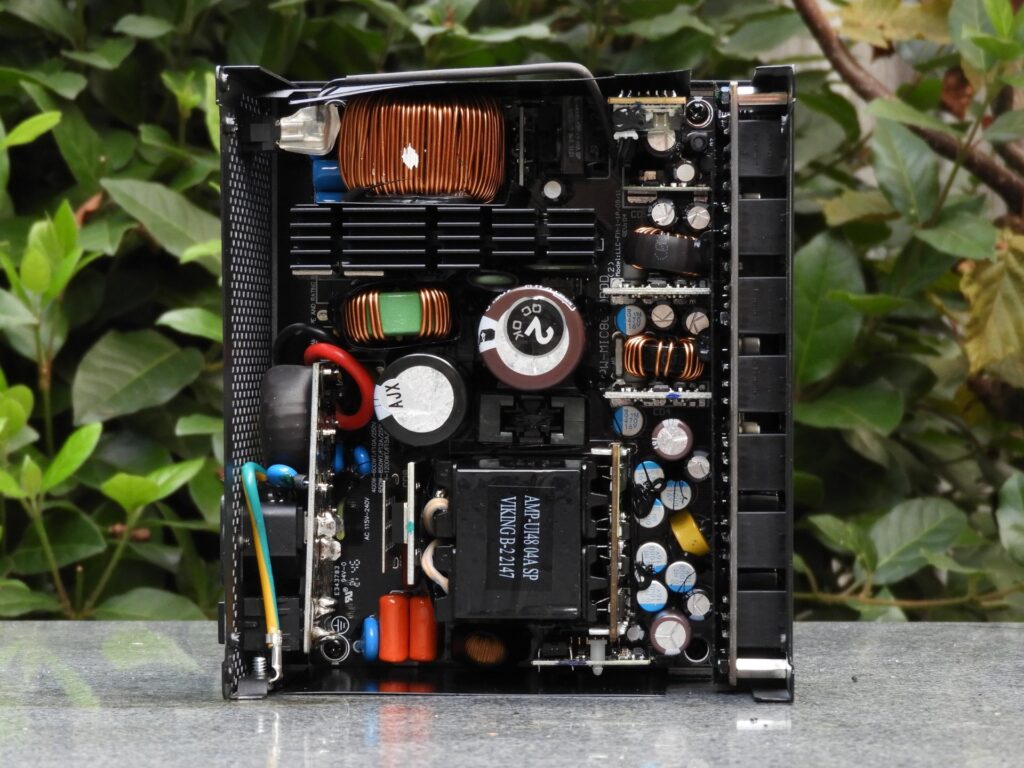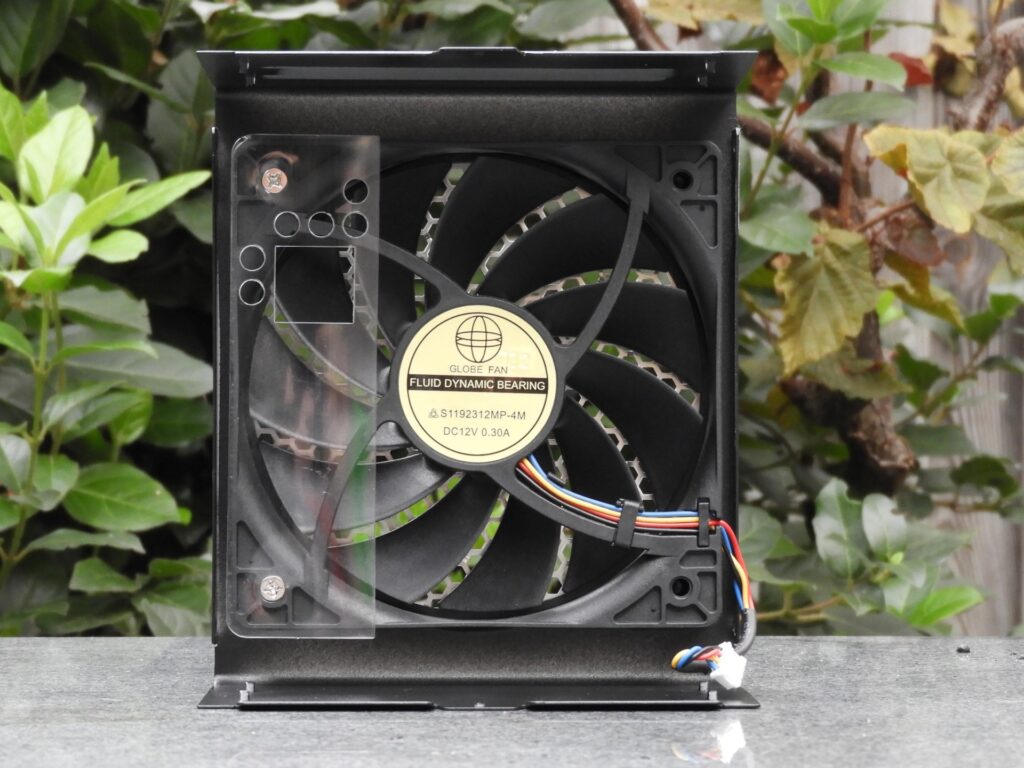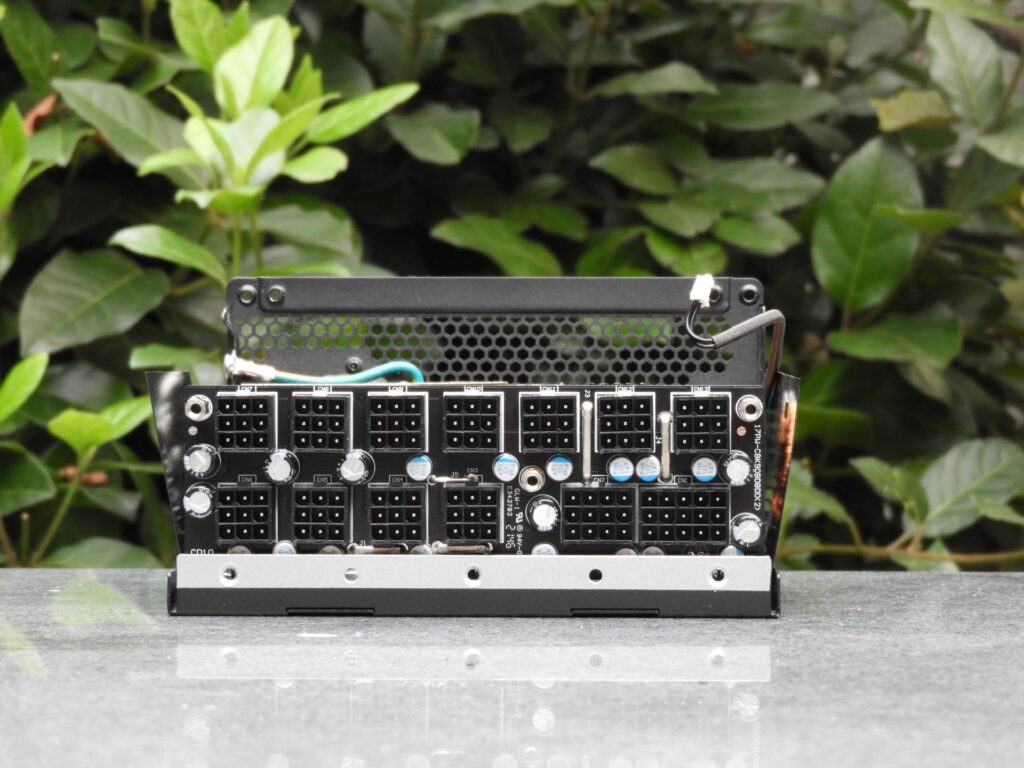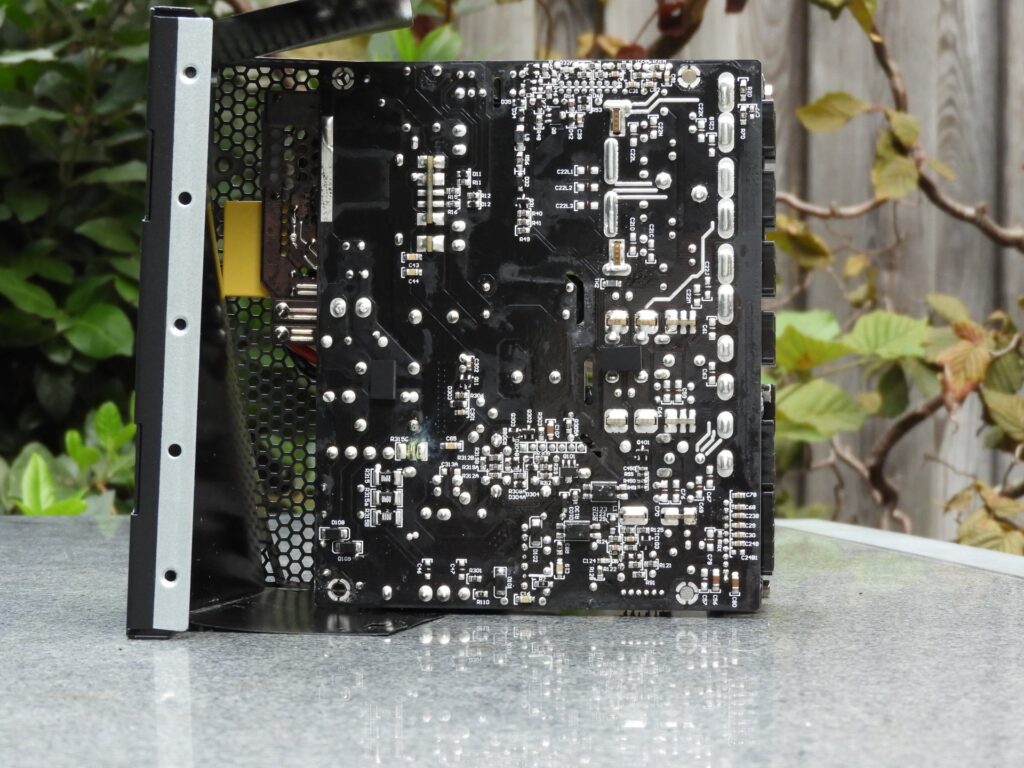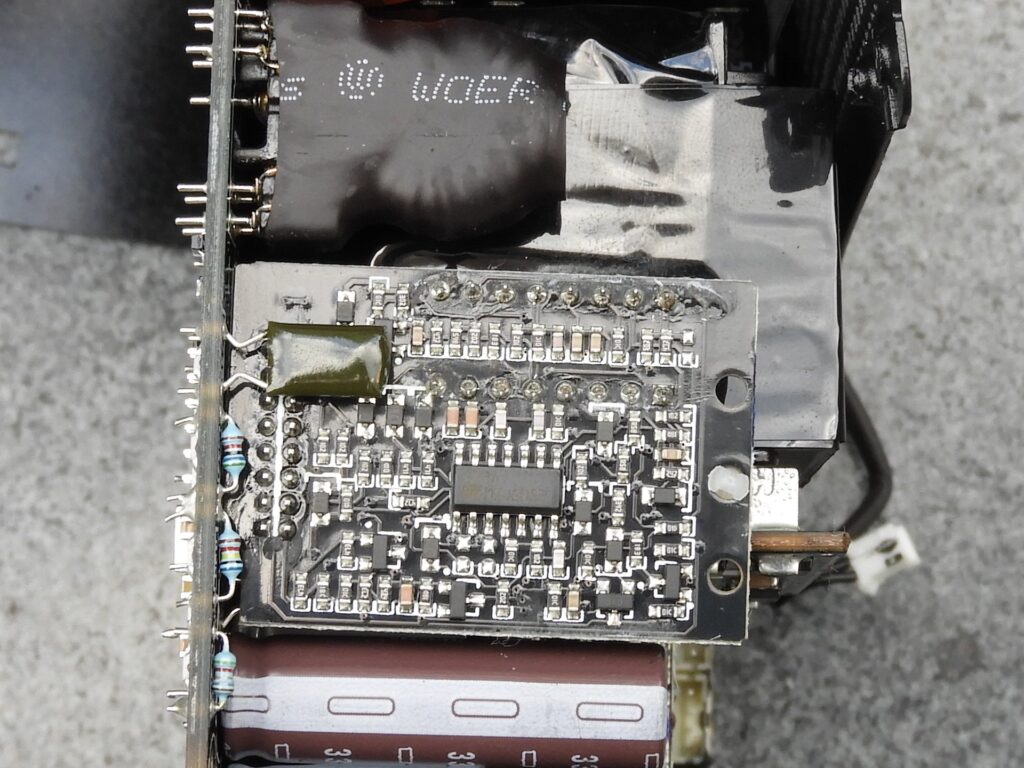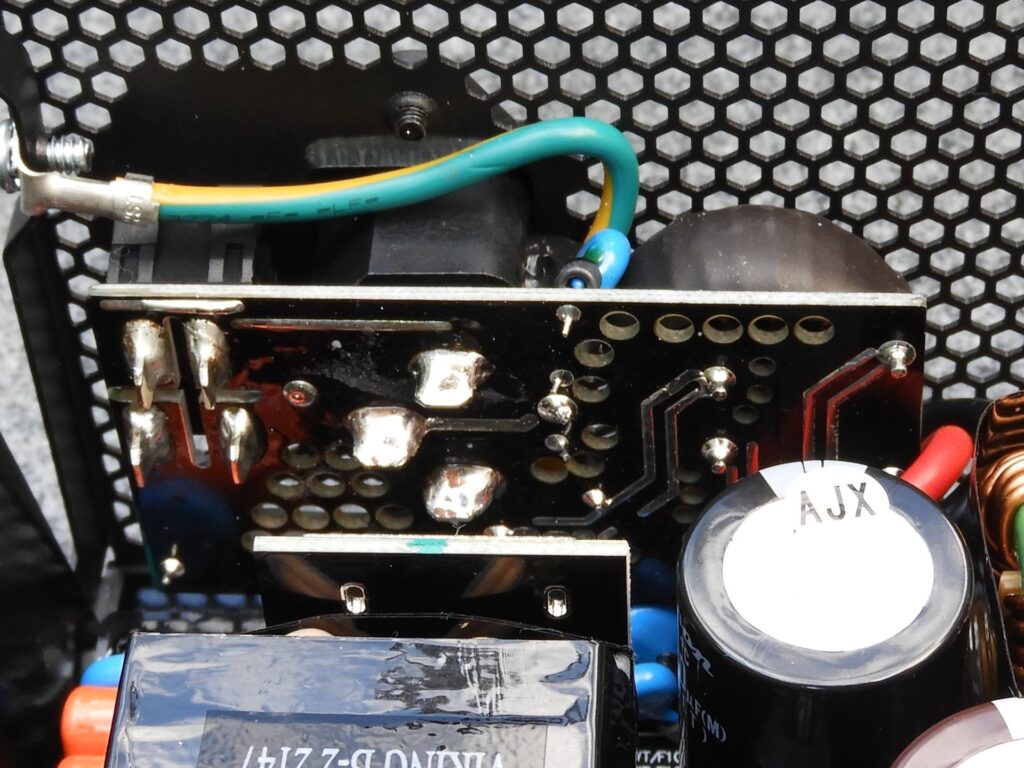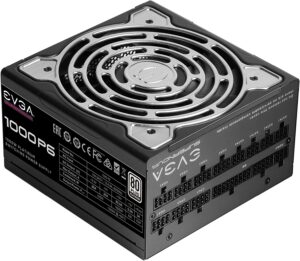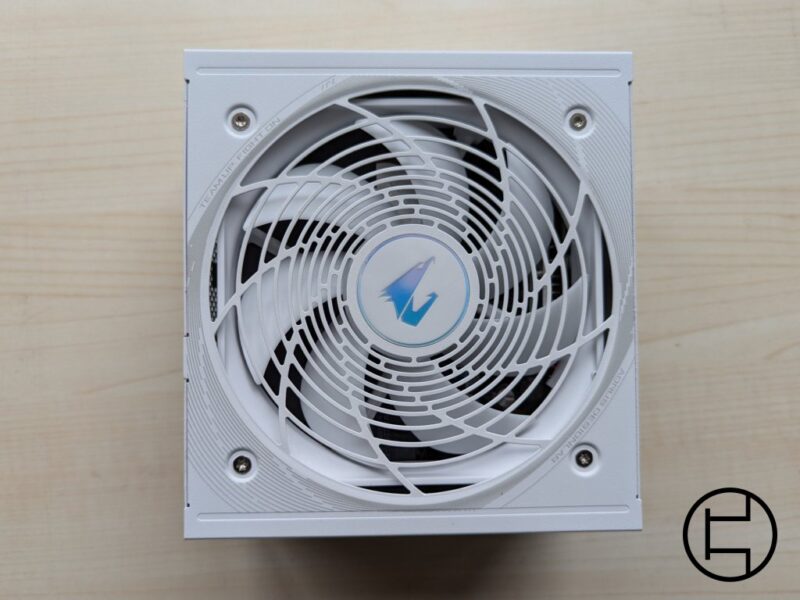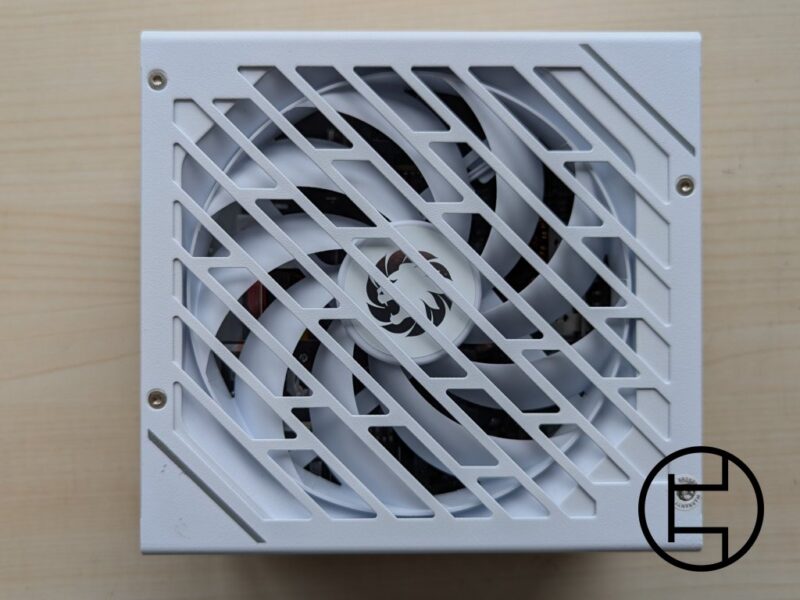Introduction
“Oh god this thing is cute!” Luke said while opening the box. At just 130mm depth, the Superflower Leadex V Pro is the second smallest unit I’ve had in my hands of this wattage, only behind the Silverstone SX1000. There definitely is something unreal about this small of a box holding this much power, but… how does it hold up? Let’s dive into the spiritual successor to the original Leadex platinum.
General Specifications
| Brand | Superflower |
| Model | Leadex V Platinum Pro |
| Wattage | 1000W |
| Introduction year | 2021 |
| Modularity | Full |
| Warranty | 10 years |
Power Specifications
| 3.3V | 5V | 12V | 5VSB | -12V |
|---|---|---|---|---|
| 20A | 20A | 83,3A | 2,5A | 0,5A |
| 100W | 999,6W | 12,5W | 6W |
Cables
| Cable type | Cable Quantity | Connector Per Cable | Gauge |
|---|---|---|---|
| ATX 24 pin | 1 | 1 | 16-20AWG |
| EPS 4+4 pin | 2 | 1 | 18AWG |
| PCIe Power 6+2 pin | 4 | 2 | 18-20AWG |
| SATA Power | 2 | 4 | 18AWG |
| SATA Power | 2 | 2 | 18AWG |
| Peripheral 4 pin | 1 | 4 | 18AWG |
The Leadex V pro features Superflower’s patented “Super connector”. This is a universal 9-pin connector that’s used for everything but the motherboard connectors. This allows you to plug in the EPS, PCIe, SATA and peripheral connectors wherever you want in the unit. How useful this is in practice is subjective, but it’s definitely worth mentioning.
External
The back is full of… Yes please! Hexagons! I swear this is becoming an obsession at this point. Outside of a few closed spots for the power plug, power switch and semi-passive or “eco” switch, the unit is full of hexagon shaped cutouts at the back. This definitely looks like one of the most open designs I’ve seen, but this is likely required to achieve the compact dimensions of the unit.
Behind the silver grill, we find a 120mm that’s almost as big as the unit itself. This grill has the Superflower logo edged in, the only place you’ll find it on the unit itself.
On the front we see the earlier mentioned universal connectors, as well as two connectors for the motherboard cables. There’s a lot of plugs close together with three rows instead of the generally used 1-2 rows.
And again, as something that should just be a minor note, the unit uses hex screws… making my job ever so slightly easier. This isn’t the case for the internal PCB, but here Superflower is required to use Phillips heads by law either way.
Protections
This was… a bit tough and did require a few guesses here and there. While the fan controller and DC-DC controllers are known, the LLC resonant controller and APFC controllers are custom controllers that are by my own guesses made by Texas Intruments and Richtek and the only other IC related to it is an On-Semi/Texas Intruments op-amp I was… lost in this regard. While the review from Aris did show the protection circuit working, I won’t be making any kind of table here, nor will I speculate anything beyond what I can actually confirm.
Parts Breakdown+Internal
| OEM | Superflower |
| Platform | Leadex V Platinum Pro |
| Input Voltage | 100-240V |
| Primary Converter | APFC Half |
| Rectifier | Synchronous Rectification |
| Regulator | DC-DC |
| Fan | Globe Fan S1192312MP-4M |
| Bearing | Fluid Dynamic Bearing |
| PCB Type | Double Sided |
| Bulk Capacitor(s) | 1x Nippon Chemicon KMW (400v, 560uf, 105c), 1x Rubycon UFM (400v, 380 uf, 105c) |
| Bridge Rectifiers | 1x Unknown |
| APFC MOSFETs | 3x Infineon IPA50R140CP (500V, 15A @ 100c), 1x Syncpower SPN5003 (500v, 20ma @ 70c) |
| APFC Boost Diode | 1x CREE (Unknown) |
| APFC Controller | 1x Superflower SF29603, 1x Superflower S9602 |
| LLC Resonant Controller | Superflower AA9013 |
| Main Switches | 2x Infineon IPB60R099CP (600V, 19A @ 100c) |
| 12v MOSFETs | 6x Infineon BSC027N04LS (40V, 88A @ 100c) |
| DC-DC Converters | 8x Alpha & Omega AON6516 (30V, 25A @ 100c) |
| DC-DC Controller | 2x On Semi NCP1587A |
| Supervisor IC | Unknown |
| Op-Amp | ON-semi LM324ADG |
| Fan controller | STMicro STM8S003F3 |
| Standby PWM Controller | Superflower SF29604 |
Only four hex screws later to take off the top of the unit, we can see the beautiful compact layout Superflower created here. While the SX1000 used a dual transformer design, here we only see a single one. It’s also interesting to see parts of the PCBs on the AC daughterboard and a separate PCB instead of the main PCB, contributing to making this unit more compact.
Because of the compact layout there were a few parts I needed to either guesstimate or base off public info about the unit. A lot of the APFC is hidden behind the AC plug PCB or behind a massive coil, Superflower uses multiple ICs that have either been rebranded or made custom by/for Superflower and have no public datasheets because of it. But… let’s talk about the stuff that is visible.
Globe fan is a manufacturer often used by the likes of HEC, Highpower and many times by Superflower in the past. A similar model 140mm fan is used in the Hela 850R we reviewed a while back. The fan is noted as a fluid dynamic fan, but I didn’t open the fan up to check if this is true. Fan manufacturers are known to put multiple bearings under the same name, making it possible for this fan to also be rifle bearing. However, both would do solid in a design like this.
Outside of a few visible patch-ups done by hand, the soldering looks pretty solid overall. No major complaints here, but also probably an early production unit where more staff is on the floor to supervise.
While you’d normally see one or two of the same bulk capacitors in PSUs, Superflower went with two different capacitors, one sourced from Nippon-Chemicon and the other from Rubycon. While I don’t know why they chose for this, the unit does hold up (literally) accordingly, so it works out fine. While it would be nice to see 450V capacitors instead of 400V, there’s a massive shortage on them.
All the capacitors I could identify on the board are made by Nippon-Chemicon or Rubycon, making Superflower’s claim of “100% Japanese capacitors” accurate. However, as these are produced in China either way, this shouldn’t matter much compared to a good capacitor from a Taiwanese or Chinese brand.
The 12V MOSFETs are on a separate daughterboard instead of the regular spot of the bottom of the unit. This again is likely done to make the unit more compact. While this is usually cooled by heatsinks on top and/or a thermal pad at the bottom to use the housing for it, the Leadex V Pro relies purely on airflow to keep the FETs cool. No issues to note with this approach, but it’s definitely a new one.
Overall, Superflower’s approach to make this unit as small as it is including a few very innovative layout changes compared to traditional PSUs of this wattage. The build quality is good, the part choice (as far as it can be identified) is solid and while a few things would be possible to improve, there’s no significant issues to note.
Electrical Performance
The following results are by third party PSU lab Cybenetics. The results shown are based off the Leadex V Pro Platinum (white) published on 29-9-2022
Test Equipment
| Electronic Loads | Chroma 63601-5 x4 |
| Chroma 63600-2 x2 | |
| Chroma 63640-80-80 x20 | |
| Chroma 63610-80-20 x2 | |
| AC Sources | Chroma 6530 |
| Keysight AC6804B | |
| Power Analyzers | N4L PPA1530 x2 |
| Sound Analyzer | Bruel & Kjaer 2270 G4 |
| Microphone | Bruel & Kjaer Type 4955-A |
| Data Loggers | Picoscope TC-08 x2 |
| Labjack U3-HV x2 | |
| Tachometer | UNI-T UT372 x2 |
| Digital Multimeter | Keysight U1273AX |
| Fluke 289 | |
| Keithley 2015 - THD | |
| UPS | CyberPower OLS3000E 3kVA x2 |
| Transformer | 3kVA x2 |
Overall (115v)
| Average efficiency | 89,703% |
| Efficiency at 2% load | 69,448% |
| Average efficiency 5VSB | 77,69% |
| Standby power consumption (W) | 0,0655 |
| Average PF | 0,987 |
| Average noise output | 35.63 dB(A) |
| Efficiency rating (ETA) | Platinum |
| Noise rating (LAMBDA) | Standard+ |
Overall (230v)
| Average efficiency | 91,77% |
| Average efficiency 5VSB | 76,05% |
| Standby power consumption (W) | 0,104742 |
| Average PF | 0,945 |
| Average noise output | 36.00 dB(A) |
| Efficiency rating (ETA) | Platinum |
| Noise rating (LAMBDA) | Standard+ |
Efficiency (115v)
| Load (115v) | Efficiency | AC (Watts) | DC (Watts) |
|---|---|---|---|
| 20w load | 68,351% | 29,265 | 20,003 |
| 40w load | 79,365% | 50,401 | 40,001 |
| 60w load | 83,889% | 71,523 | 60 |
| 80w load | 86,006% | 92,969 | 79,959 |
| 10% load | 87,439% | 114,381 | 100,014 |
| 20% load | 90,254% | 221,564 | 199,971 |
| 30% load | 91,379% | 328,329 | 300,025 |
| 40% load | 91,569% | 436,591 | 399,783 |
| 50% load | 91,248% | 547,4 | 499,492 |
| 60% load | 90,750% | 661,203 | 600,042 |
| 70% load | 90,075% | 776,905 | 699,796 |
| 80% load | 89,454% | 894,135 | 799,843 |
| 90% load | 88,623% | 1015,124 | 899,638 |
| 100% load | 87,778% | 1139,663 | 1000,373 |
| Crossload 1 | 83,434% | 121,418 | 101,304 |
| Crossload 2 | 82,801% | 122,459 | 101,397 |
| Crossload 3 | 77,503% | 86,952 | 67,39 |
| Crossload 4 | 88,798% | 1126,27 | 1000,106 |
Efficiency (230v)
| Load (230v) | Efficiency | AC (Watts) | DC (Watts) |
|---|---|---|---|
| 20w load | 68,656% | 29,546 | 20,285 |
| 40w load | 79,504% | 50,892 | 40,461 |
| 60w load | 84,553% | 70,964 | 60,002 |
| 80w load | 87,011% | 91,903 | 79,966 |
| 10% load | 88,062% | 113,58 | 100,021 |
| 20% load | 91,935% | 217,521 | 199,977 |
| 30% load | 93,019% | 322,553 | 300,036 |
| 40% load | 93,347% | 428,33 | 399,834 |
| 50% load | 93,294% | 535,441 | 499,534 |
| 60% load | 92,992% | 645,295 | 600,071 |
| 70% load | 92,615% | 755,641 | 699,838 |
| 80% load | 92,198% | 867,55 | 799,868 |
| 90% load | 91,753% | 980,506 | 899,648 |
| 100% load | 91,195% | 1096,976 | 1000,386 |
| Crossload 1 | 84,330% | 120,137 | 101,311 |
| Crossload 2 | 83,692% | 121,158 | 101,399 |
| Crossload 3 | 78,241% | 86,135 | 67,393 |
| Crossload 4 | 91,985% | 1087,307 | 1000,156 |
Voltage Regulation (115v)
| Load (115v) | 12V (voltage) | 5V (voltage) | 3.3V (voltage) | 5VSB (voltage) |
|---|---|---|---|---|
| 20w load | 12.165V | 5.041V | 3.322V | 5.076V |
| 40w load | 12.164V | 5.041V | 3.322V | 5.072V |
| 60w load | 12.163V | 5.04V | 3.321V | 5.069V |
| 80w load | 12.162V | 5.04V | 3.32V | 5.064V |
| 10% load | 12.161V | 5.039V | 3.318V | 5.051V |
| 20% load | 12.157V | 5.038V | 3.316V | 5.039V |
| 30% load | 12.155V | 5.037V | 3.315V | 5.027V |
| 40% load | 12.155V | 5.035V | 3.313V | 5.016V |
| 50% load | 12.156V | 5.034V | 3.311V | 5.004V |
| 60% load | 12.158V | 5.033V | 3.308V | 4.991V |
| 70% load | 12.159V | 5.032V | 3.306V | 4.978V |
| 80% load | 12.161V | 5.03V | 3.303V | 4.967V |
| 90% load | 12.161V | 5.029V | 3.301V | 4.957V |
| 100% load | 12.156V | 5.027V | 3.3V | 4.948V |
| Crossload 1 | 12.156V | 5.036V | 3.293V | 5.06V |
| Crossload 2 | 12.159V | 5.029V | 3.321V | 5.07V |
| Crossload 3 | 12.157V | 5.044V | 3.274V | 5.058V |
| Crossload 4 | 12.161V | 5.031V | 3.322V | 5.024V |
Voltage Regulation (230v)
| Load (230v) | 12V (voltage) | 5V (voltage) | 3.3V (voltage) | 5VSB (voltage) |
|---|---|---|---|---|
| 20w load | 12.164V | 5.041V | 3.322V | 5.076V |
| 40w load | 12.163V | 5.04V | 3.321V | 5.072V |
| 60w load | 12.162V | 5.04V | 3.321V | 5.067V |
| 80w load | 12.161V | 5.039V | 3.32V | 5.063V |
| 10% load | 12.160V | 5.039V | 3.318V | 5.051V |
| 20% load | 12.156V | 5.037V | 3.315V | 5.039V |
| 30% load | 12.153V | 5.036V | 3.314V | 5.027V |
| 40% load | 12.154V | 5.035V | 3.313V | 5.015V |
| 50% load | 12.155V | 5.034V | 3.31V | 5.003V |
| 60% load | 12.157V | 5.033V | 3.307V | 4.991V |
| 70% load | 12.158V | 5.031V | 3.305V | 4.977V |
| 80% load | 12.159V | 5.03V | 3.302V | 4.967V |
| 90% load | 12.161V | 5.028V | 3.3V | 4.957V |
| 100% load | 12.155V | 5.027V | 3.299V | 4.948V |
| Crossload 1 | 12.155V | 5.035V | 3.292V | 5.06V |
| Crossload 2 | 12.158V | 5.028V | 3.321V | 5.07V |
| Crossload 3 | 12.156V | 5.044V | 3.273V | 5.058V |
| Crossload 4 | 12.160V | 5.031V | 3.322V | 5.023V |
Ripple (115v)
| Test | 12V | 5V | 3.3V | 5VSB | Pass/Fail |
|---|---|---|---|---|---|
| 10% Load | 5.7 mV | 7.2 mV | 7.8 mV | 7.2 mV | Pass |
| 20% Load | 5.4 mV | 8.1 mV | 8.3 mV | 7.4 mV | Pass |
| 30% Load | 5.7 mV | 8.7 mV | 9.5 mV | 8.5 mV | Pass |
| 40% Load | 6.6 mV | 8.8 mV | 8.9 mV | 8.4 mV | Pass |
| 50% Load | 7.3 mV | 9.8 mV | 11.1 mV | 10.2 mV | Pass |
| 60% Load | 8.0 mV | 9.3 mV | 10.3 mV | 40.4 mV | Pass |
| 70% Load | 10.7 mV | 13.1 mV | 11.7 mV | 42.3 mV | Pass |
| 80% Load | 11.1 mV | 12.8 mV | 17.2 mV | 39.9 mV | Pass |
| 90% Load | 11.5 mV | 13.3 mV | 18.7 mV | 19.0 mV | Pass |
| 100% Load | 12.1 mV | 14.4 mV | 18.1 mV | 14.2 mV | Pass |
| Crossload1 | 7.9 mV | 10.5 mV | 16.2 mV | 42.2 mV | Pass |
| Crossload2 | 6.3 mV | 7.9 mV | 10.2 mV | 39.0 mV | Pass |
| Crossload3 | 7.7 mV | 7.8 mV | 15.4 mV | 37.6 mV | Pass |
| Crossload4 | 11.4 mV | 13.1 mV | 11.4 mV | 44.9 mV | Pass |
Ripple (230v)
| Test | 12V | 5V | 3.3V | 5VSB | Pass/Fail |
|---|---|---|---|---|---|
| 10% Load | 5.4 mV | 7.2 mV | 7.6 mV | 7.7 mV | Pass |
| 20% Load | 5.8 mV | 7.9 mV | 7.8 mV | 7.7 mV | Pass |
| 30% Load | 5.6 mV | 8.7 mV | 9.1 mV | 8.0 mV | Pass |
| 40% Load | 6.6 mV | 8.8 mV | 8.6 mV | 8.0 mV | Pass |
| 50% Load | 7.3 mV | 9.3 mV | 9.0 mV | 10.5 mV | Pass |
| 60% Load | 7.6 mV | 9.4 mV | 10.1 mV | 9.7 mV | Pass |
| 70% Load | 10.5 mV | 13.1 mV | 11.8 mV | 30.6 mV | Pass |
| 80% Load | 10.4 mV | 13.1 mV | 16.6 mV | 31.2 mV | Pass |
| 90% Load | 10.5 mV | 14.2 mV | 16.8 mV | 16.4 mV | Pass |
| 100% Load | 11.7 mV | 15.0 mV | 19.9 mV | 11.0 mV | Pass |
| Crossload1 | 7.6 mV | 9.8 mV | 16.4 mV | 37.7 mV | Pass |
| Crossload2 | 6.2 mV | 7.8 mV | 10.9 mV | 39.2 mV | Pass |
| Crossload3 | 7.7 mV | 8.1 mV | 16.2 mV | 40.6 mV | Pass |
| Crossload4 | 10.6 mV | 13.3 mV | 11.4 mV | 44.8 mV | Pass |
Fan Speed/Noise (115v)
| Load (115v) | RPM | Noise (DBa) | Temperature in | Temperature out |
|---|---|---|---|---|
| 20w load | 483 | <6 | 37.37°C | 40.8°C |
| 40w load | 482 | <6 | 37.48°C | 40.96°C |
| 60w load | 510 | <6 | 38.85°C | 42.62°C |
| 80w load | 541 | 7,9 | 39.26°C | 43.2°C |
| 10% load | 615 | 12,4 | 40.3°C | 44.4°C |
| 20% load | 704 | 18,4 | 41.23°C | 45.63°C |
| 30% load | 816 | 22,4 | 41.5°C | 46.25°C |
| 40% load | 1002 | 28 | 41.86°C | 46.89°C |
| 50% load | 1214 | 33,8 | 42.96°C | 48.75°C |
| 60% load | 1389 | 37,3 | 49.16°C | 43.21°C |
| 70% load | 1569 | 40,3 | 50.78°C | 43.94°C |
| 80% load | 1736 | 42,7 | 51.46°C | 44.22°C |
| 90% load | 1905 | 44,4 | 53.59°C | 45.22°C |
| 100% load | 2073 | 45,9 | 56.58°C | 46.17°C |
| Crossload 1 | 1205 | 33,7 | 46.74°C | 41.21°C |
| Crossload 2 | 1008 | 28,1 | 40.5°C | 48.22°C |
| Crossload 3 | 921 | 25,8 | 40.73°C | 49.89°C |
| Crossload 4 | 1896 | 44,3 | 46.85°C | 57.03°C |
Fan Speed/Noise (230v)
| Load (230v) | RPM | Noise (DBa) | Temperature in | Temperature out |
|---|---|---|---|---|
| 20w load | 540 | <6 | 36.87°C | 39.95°C |
| 40w load | 490 | 7,9 | 37.42°C | 40.83°C |
| 60w load | 540 | 7,9 | 38.11°C | 41.88°C |
| 80w load | 585 | 12,4 | 39.42°C | 43.5°C |
| 10% load | 646 | 13,9 | 40.45°C | 44.7°C |
| 20% load | 701 | 18,1 | 40.7°C | 45.03°C |
| 30% load | 814 | 22,4 | 41.82°C | 46.45°C |
| 40% load | 1008 | 28,1 | 42.35°C | 47.09°C |
| 50% load | 1172 | 32,8 | 42.83°C | 48.03°C |
| 60% load | 1350 | 36,5 | 48.56°C | 43.04°C |
| 70% load | 1521 | 39,4 | 49.6°C | 43.08°C |
| 80% load | 1704 | 42,1 | 50.73°C | 43.37°C |
| 90% load | 1855 | 43,8 | 52.7°C | 44.49°C |
| 100% load | 2060 | 45,8 | 56.44°C | 46.97°C |
| Crossload 1 | 1308 | 35,7 | 50.04°C | 44.5°C |
| Crossload 2 | 1146 | 32,1 | 43.1°C | 49.56°C |
| Crossload 3 | 1119 | 31,5 | 41.6°C | 48.99°C |
| Crossload 4 | 1888 | 44,2 | 42.63°C | 52.38°C |
Hold-up Time (230v)
| Hold-up time (ms) | 22,4 |
| AC loss to PWR-OK hold up time (ms) | 16,7 |
| PWR_OK inactive to DC loss delay (ms) | 5,7 |
Conclusion
The Superflower Leadex V Pro has shown off several innovative layout changes to achieve its incredible 130mm depth, including moving many components on their own PCB or even using the AC plug PCB for it. It was an interesting, even if at times confusing unit to review.
But… because of its compact size, the fan has to compensate for it, it’s not the kind of tank the original Leadex platinum was in build quality and if you don’t need a unit this compact, there are similarly priced units that offer a lower noise level at the compromise of a bigger footprint. It’s also disappointing to see the use of 20 AWG wires and the low OCP not even allowing to load the unit to 110% while most units have it set around 120-130% these days.
If you’re specifically after a compact PSU for something like an SFF rig, the Leadex V pro should be on your list of considerations… but it had to make a few compromises to achieve it. I’ll leave a few alternatives below, featuring both compact units and more quiet PSUs at a larger footprint.
Superflower Leadex V Pro Platinum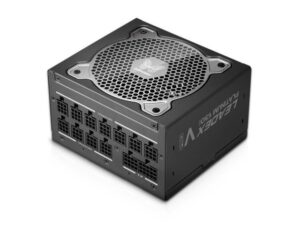
Buy Leadex V Pro Platinum
- Really compact
- Solid component choice
- Good build quality
- Great electrical performance
- Really low OCP limit
- 20 AWG wires used on PCIe
- Loud
Alternatives
EVGA G7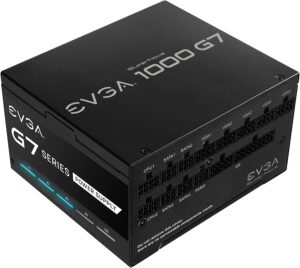
Buy G7
- 130mm depth
- Solid component choice
- Relatively quiet given its size
- Lower efficiency
- 10mm deeper
- 140mm depth
- Solid component choice
- Relatively quiet given its size
- Soon to be discontinued
- 10mm deeper
Corsair RM1000e
Buy RM1000e
- 140mm depth
- Solid component choice
- Relatively quiet given its size
- Compatible with Corsair 12VHPWR cable
- Not yet widely available
- 10mm deeper
Silverstone SX1000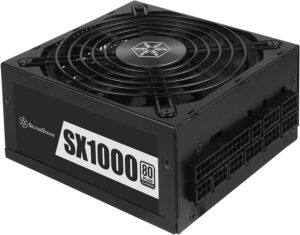
Buy SX1000
- Even more compact
- Solid component choice
- Only current option for 1000W SFX-L
- Loud
- OTP set too high
Corsair HX1000i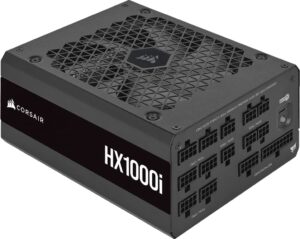
Buy HX1000i
- Very quiet
- Great component choice
- ATX 3.0 compatible
- Compatible with Corsair 12VHPWR cable
- 180mm depth
Adata XPG Cybercore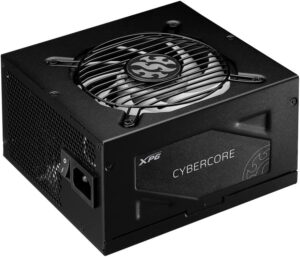
Buy Cybercore
- Very quiet
- Great component choice
- Compatible with Corsair 12VHPWR cable
- 160mm depth
- No ATX 3.0
MSI Ai1000P
Buy Ai1000P
- Very quiet
- Great component choice
- Included 12VHPWR cable
- ATX 3.0 compatible
- 160mm depth
- Not yet available
Cougar Polar 1050w
Buy Polar
- Very quiet
- Great component choice
- 180mm depth
- No ATX 3.0 or included/compatible 12VHPWR
